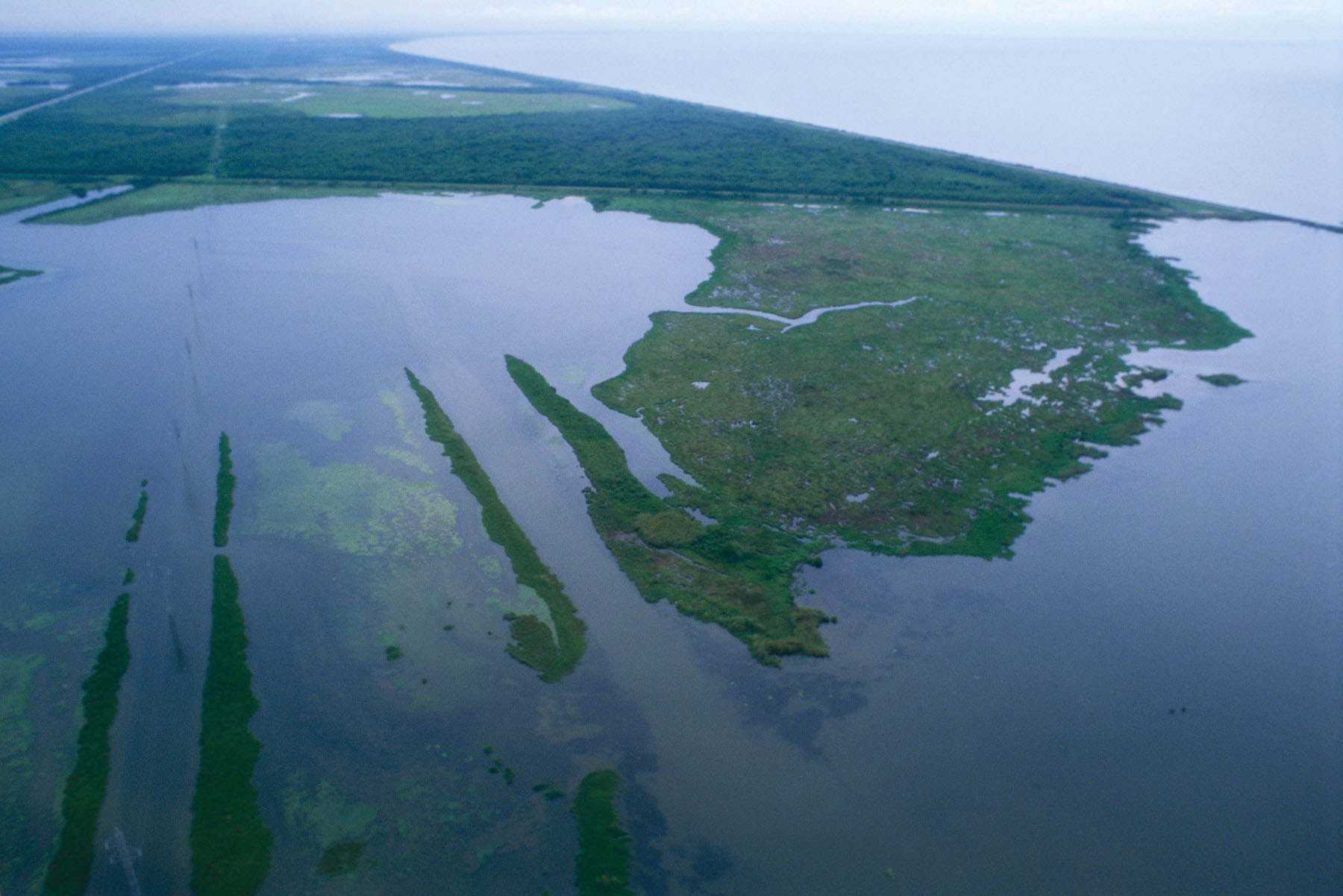An Oily Outlook

Six species cited repeatedly for being most threatened by the oil spill include brown pelicans, Kemp's Ridley sea turtles, North Atlantic bluefin tuna, oysters, bottlenose dolphins, and sharks. Brown pelicans only came off the endangered species list last year. They, along with other seagoing birds, mistake oil slicks for calm water and dive right in. Not only does oil destroy the protective layering of feathers, reducing buoyancy and inviting hypothermia, it's a foul compound to find in your stomach, which happens to pelicans when they try to preen their oil-stricken coat and ingest the sticky substance. Any bird passing through the Gulf will have the same problem, and it's migrating season for several species. Oil washing to shore is also a danger to nesting shorebirds, such as plovers and sandpipers; eggs covered in oil might never hatch. This is true for sea turtles as well. Five of the seven species of sea turtles live in the Gulf and now find a slimy black intruder in their favorite feeding grounds. Kemp's Ridley is the most endangered sea turtle in the world and is currently in its peak nesting season.
North Atlantic bluefin tuna, already dangerously close to extinction and prized for their tasty flesh may lose a whole generation. One of many fish species currently spawning near or in the oil spill, bluefin tuna's (and other fish) larvae are quite susceptible to the chemical dispersants and floating oil slicks, partly because of their more-or-less stationary nature, floating along with seaweed patches. Oysters, shellfish, and other filter feeders share the same predicament. They must feed on whatever comes by, no choosers among beggars.
Bottlenose dolphins and other marine mammals have yet another set of difficulties. Like fish and birds, their skin is sensitive to irritations caused by the oil, but they have the added bad luck breathing in oil-induced toxins when they surface; it's a poisonous perfume that can lead to fatal lung complications. There's also nothing known on what long-term effects may arise from continued migration through the polluted waters, and their young may ingest oil from contaminated teats. Sharks are also spawning, and the Chandeleur Islands, a known grassland nursery for sharks, are very close to the spill. Whale sharks feeding on plankton at the surface may also be at risk.
At the forefront of the danger to Gulf wildlife is the jeopardy of the Louisiana estuaries already hit by the oil. Ninety percent of all marine species in the Gulf depend on coastal estuaries at some point in their lives; forty percent of all the Gulf's wetlands and marshes are located along the Louisiana coast, and this oil spill looms over an already battered ecosystem. The wetlands are the base of the food chain for a large amount of Gulf wildlife: take them out, and "it's like you pull a thread on the shirt and it all comes apart," said Mark LaSalle, an ecologist at the Pascagoula River Audubon Center in Moss Point, Miss. Wetlands also fill a kidney-like function for the Gulf, filtering out chemicals and other undesirables, but it's unclear how the marshes might react to such an incursion. They might recover somewhat, like the shores near the Exxon-Valdez spill (which still have a layer of oil about 7 inches down that interferes with local wildlife), or if too much oil seeps into the porous sediment, they might lose most of the vegetation and cease to be wetlands. Hope exists that the marshes might break down the sweet crude oil over time, as it is lighter and less-toxic than other oils.
If you would like to help with wildlife restoration and rescue efforts or have questions about the oil spill response, visit www.deepwaterhorizonresponse.com. There are several volunteering opportunities available, this being only one way to find them. A simple Google search will reveal several others. Another good website is gulfseagrant.tamu.edu/oilspill/index.htm.
There is one more species worth mentioning that is also being affected by the spill, one which you're probably familiar with: humans. Certainly our immediate lives aren't at risk like some wildlife, but many livelihoods are ruined. Louisiana harvests fifty percent of the nation's shrimp crop, thirty-five percent of blue crabs, and forty percent of oysters. The Gulf commercial fisheries is one-fifth of the US's seafood economy, according to the National Wildlife Federation and the NOAA (National Oceanic and Atmospheric Administration). As of June 13, about thirty-seven percent of the Gulf available for commercial fishing is closed. NOAA (www.noaa.gov) and USA Today (www.usatoday.com/news/nation/oil-spill-map.htm) are providing daily updates of oil spill closures.


